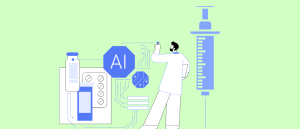Easy as ABC: polymer increases chemotherapeutic payload

Bottlebrush-shaped polymer chains can deliver hundreds of prodrug molecules directly to tumors, rather than the handful currently possible with antibody–drug conjugates (ADCs).
Research from Massachusetts Institute of Technology (MIT; MA, USA) has uncovered that brush-shaped polymer particles can be loaded with hundreds of prodrug molecules. These ‘antibody–bottlebrush prodrug conjugates’ (ABCs) could allow for the delivery of less potent cancer drugs or drug combinations.
ADCs allow chemotherapy to be delivered directly to a tumor, avoiding some of the side effects that come with intravenous treatment. However, because only a small number of drug molecules can be attached to each antibody, they are limited to very potent drugs – which often come with their own side effects.
 Novel AI drug discovery tool predicts more accurate treatment ‘recipes’
Novel AI drug discovery tool predicts more accurate treatment ‘recipes’
A new AI tool has ben shown to identify treatments designed to reverse disease states in cells up to 25 times quicker, more efficiently and more accurately than previous models.
Brushing up their knowledge
To address this, a team led by Jeremiah Johnson (MIT) turned to technology they first published in 2023. The polymer backbone of their ‘bottlebrush’ particles is capable of affixing hundreds of prodrug molecules, allowing a wider range of drugs or combinations of drugs to be administered.
Leveraging click chemistry, Johnson and the team were able to conjugate up to three bottlebrushes to an IgG1 monoclonal antibody, creating an ABC. Current ADCs can carry up to eight drug molecules; utilizing cleavable linkers and polyethylene glycol branches, the ABCs had average drug-to-antibody ratios up to two orders of magnitude greater than traditional ADCs. The cleavable linkers enabled some of the drugs to be released straightaway, whereas some were absorbed into the tumor cells before activating.
“We can use antibody–bottlebrush conjugates to increase the drug loading, and in that case, we can use less potent drugs,” explained lead author Bin Liu. “In the future, we can very easily copolymerize with multiple drugs together to achieve combination therapy.”
Putting the ABCs to the test
The team tested their ABCs with several different therapeutic agents – microtubule inhibitors called MMAE and paclitaxel, and two DNA-damaging agents, doxorubicin and SN-38 – and antibody targets, HER2 and MUC1.
In most of the tests, which utilized murine breast and ovarian cancer models, the ABCs eradicated the tumors. The ABCs also compared favorably to two approved HER2-targeting ADCs, T-DXd and TDM-1.
The team hope to continue this work, testing combinations of drugs that have differing mechanisms, in a bid to improve overall effectiveness. With over 100 antibodies approved to treat different diseases, they also plan on testing their ABCs with further antibodies.
“We are excited about the potential to open up a new landscape of payloads and payload combinations with this technology, that could ultimately provide more effective therapies for cancer patients,” concluded Johnson.